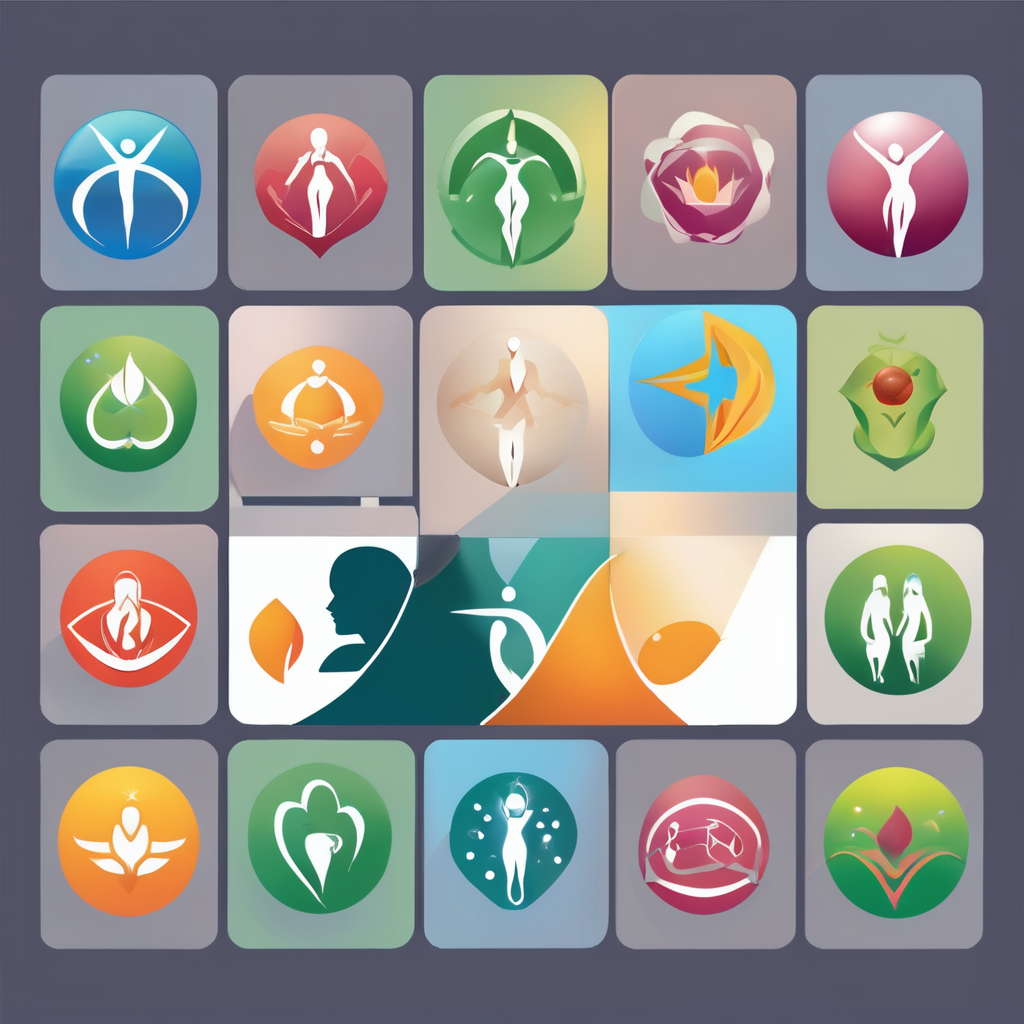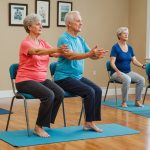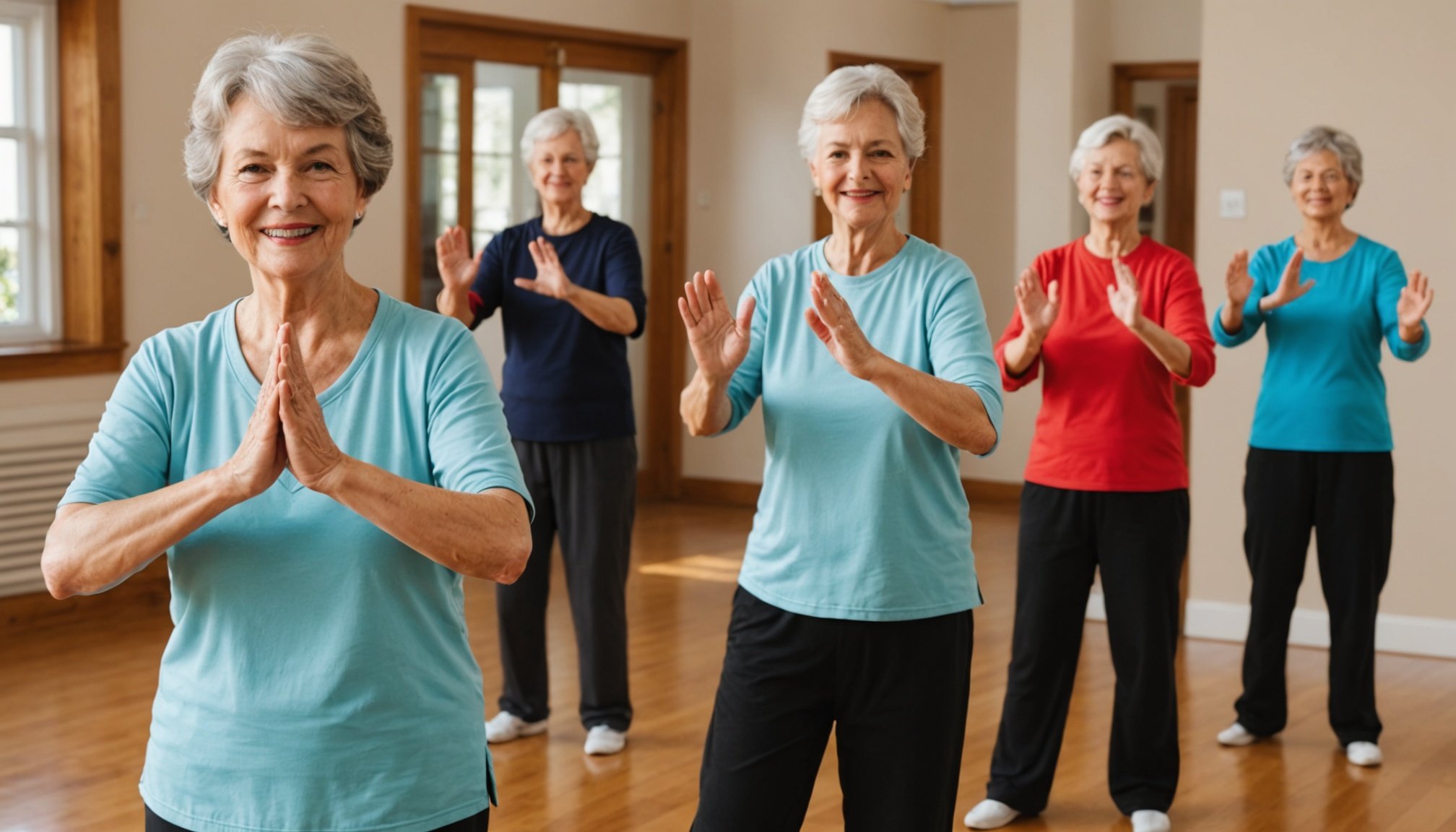Overview of Tai Chi and Its Importance for Seniors
Tai Chi, a centuries-old Chinese martial art, benefits seniors through its focus on balance, flexibility, and mindfulness. Originating as a form of self-defense, Tai Chi has evolved into a gentle practice promoting health and well-being. Its slow, deliberate movements are ideal for maintaining the mind-body connection, enhancing agility, and preserving balance in seniors.
The significance of balance and agility cannot be overstated for older adults. Falls are a prevalent concern, and practices that strengthen these faculties are crucial. Tai Chi’s movements improve core strength and coordination, essential for preventing falls. This martial art fosters a heightened sense of awareness, aiding in quick adjustments to changes in posture or terrain.
Also read : Tailoring your diet: unlocking the power of nutrigenomics for managing metabolic syndrome
Mindfulness, a central aspect of Tai Chi, offers mental health benefits. It encourages living in the moment, helping reduce stress and alleviate anxiety. For seniors, practicing Tai Chi can improve cognitive functions and provide a sense of calm, supporting overall mental well-being. This holistic approach makes Tai Chi an essential activity, crafting a stronger mind-body connection while safeguarding physical health.
Research-Backed Benefits of Tai Chi
In recent years, research studies have highlighted numerous Tai Chi health benefits, especially for seniors. Studies consistently show that regular Tai Chi practice enhances physical fitness by improving strength, flexibility, and balance. These are critical areas for older adults who may face age-related physical decline. Tai Chi’s gentle, flowing movements promote muscle endurance and joint stability, crucial in reducing fall risks.
Additional reading : Harnessing the benefits of essential oils: can they relieve symptoms of seasonal affective disorder?
Research further underscores Tai Chi’s impact on mental well-being. A study in 2022 found that seniors practicing Tai Chi experienced reduced levels of depression and anxiety. This aligns with findings that highlight Tai Chi’s potential to lower stress, improve mood, and contribute to an overall feeling of calm.
Long-term health improvements are linked to consistent Tai Chi practice. For instance, a 2019 study indicated that seniors who practiced Tai Chi regularly maintained better cardiovascular health and bone density compared to those who did not engage in any form of exercise. Thus, the physical fitness and mental health benefits, validated by these comprehensive research studies, affirm Tai Chi as a potent tool for enhancing seniors’ overall well-being.
Specific Tai Chi Exercises for Seniors
Tai Chi offers adaptable exercises benefiting those with varied mobility levels. Here, we introduce specific exercises and modifications catering to seniors’ needs.
Basic Tai Chi Movements
For beginners, focus on foundational movements like “Wave Hands Like Clouds” and “Embrace the Tiger.” These improve stability and balance, crucial for fall prevention. Executed slowly, these moves enhance the mind-body connection, fostering mindfulness and peace.
Modifications for Different Mobility Levels
For seniors with mobility concerns, adaptations ensure inclusivity. For instance, movements can be performed seated, providing comfort while practising Tai Chi. This adaptability ensures safe practices without compromising benefits.
Recommended Tai Chi Forms
Beginners often start with Yang-style Tai Chi, noted for its slower, gentle pace. This style is ideal due to its suitability for different skill levels and the comprehensive benefits it provides. As proficiency increases, exploring other styles adds variety and complexity, continuously challenging the body and mind.
This tailored approach allows seniors to reap Tai Chi’s benefits while ensuring safety and comfort. It’s a harmonious blend of tradition adapted to modern needs, making Tai Chi exercises accessible and effective for enhancing well-being.
Getting Started with Tai Chi
Embarking on a journey with Tai Chi can be a fulfilling experience for seniors. The first step is to identify a local class or explore online resources. Many communities offer beginner-friendly classes catering specifically to older adults, providing a social setting that facilitates learning. Online platforms also serve as excellent resources, offering video lessons that allow learners to practice at their own pace, from the comfort of home.
Proper instruction is paramount when starting Tai Chi. Seeking guidance from certified instructors ensures that beginners adopt correct postures and techniques, essential for avoiding injury and maximising benefits. This guidance paves the way for developing a foundational understanding, fostering enthusiasm and confidence in practice.
For newcomers, some beginner tips can cultivate a rewarding practice. Starting slowly and setting realistic goals encourages progression without overwhelming oneself. It’s crucial to focus on maintaining mindfulness and the mind-body connection during sessions, as these are central to Tai Chi philosophy. Beginners are advised to be patient, as building proficiency requires time and consistent effort. With these strategies, seniors can confidently begin their Tai Chi practice, embarking on a journey towards improved health and well-being.
Personal Testimonials and Case Studies
Delving into real-world experiences, Tai Chi success stories from seniors illuminate the transformative power of this ancient practice. Many seniors report a marked improvement in quality of life, sharing how Tai Chi has become an integral part of their daily routine. These testimonials often highlight enhanced stability and agility, pivotal in maintaining independence as they age.
Real-Life Experiences
Seniors frequently express how Tai Chi promotes a sense of peace and reduces anxiety. For example, one participant noted that practicing Tai Chi enabled her to manage her stress levels more effectively, resulting in better sleep and an uplifted mood. This aligns with studies linking Tai Chi to improved mental health and emotional well-being, benefiting cognitive functions and stress management.
Case Study Insights
In particular, case studies underscore remarkable advancements in balance and agility. In one study, elderly participants who engaged in Tai Chi regularly over six months demonstrated significant improvements in gait and lower extremity strength, reducing fall risks and enhancing mobility. Such stories and observations elucidate the profound impact of Tai Chi, making it a potent tool for enriching seniors’ lives and fostering a thriving community spirit.
Safety Considerations and Overcoming Barriers
Practicing Tai Chi offers numerous benefits, but safety and addressing concerns are paramount to fostering a secure environment for seniors. One prevalent concern is the apprehension about falls or injuries due to compromised balance or mobility. It is essential to start with gentle exercises adapted to individual capabilities to minimize these risks. For instance, opting for seated modifications or using support can help maintain stability and prevent falls.
To alleviate health issues and mobility limitations, focus on warm-up exercises and gradual progression. Tai Chi instructors should emphasize proper techniques, ensuring movements are executed slowly and deliberately. This approach helps participants tune into their own pace while cultivating confidence.
Participation barriers can include lack of access to classes or feeling intimidated by group settings. Encouraging virtual classes or small group sessions can help seniors engage more comfortably. Community involvement and peer support often provide both motivation and a sense of belonging. Highlighting success stories and testimonials, especially from other seniors, can inspire newcomers to embrace Tai Chi. Ultimately, creating an encouraging and inclusive atmosphere ensures seniors enjoy both the physical and emotional joys of this ancient practice.
Enhancing Quality of Life through Tai Chi
Engaging in Tai Chi extends beyond mere physical exercise; it enriches quality of life through social and holistic benefits. Participating in Tai Chi classes fosters social interaction, inviting seniors to connect and build community. These interactions combat loneliness and create a supportive network, significantly boosting morale and enjoyment.
The benefits of Tai Chi for social well-being complement its profound impact on emotional health. Regular practice can uplift mood and alleviate feelings of isolation, offering a sense of purpose and connection. As practitioners gather, they share experiences, encouraging one another on their wellness journeys.
Holistically, Tai Chi enhances emotional and physical well-being, intertwining mind and body care. Its gentle movements promote joint flexibility and muscle strength, while the meditative aspect soothes the mind. These combined effects lead to overall improved life satisfaction and daily function.
Additionally, Tai Chi helps cultivate a peaceful mindset, reducing stress and promoting relaxation. This positive mental shift contributes to a greater sense of life satisfaction, helping seniors enjoy each moment more fully. Emphasising the social benefits and holistic approach makes Tai Chi a valuable tool in enhancing both physical and emotional life quality.











